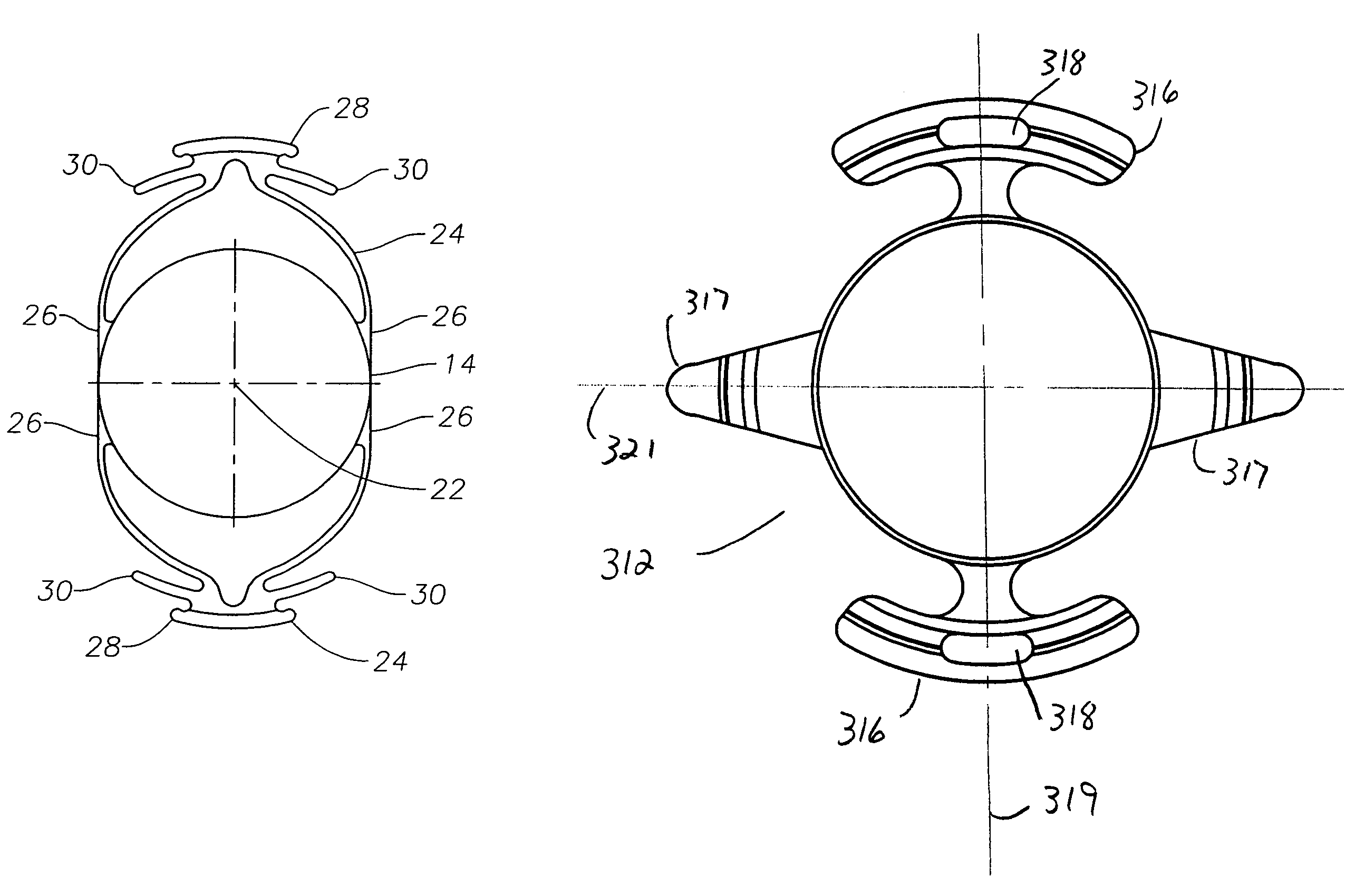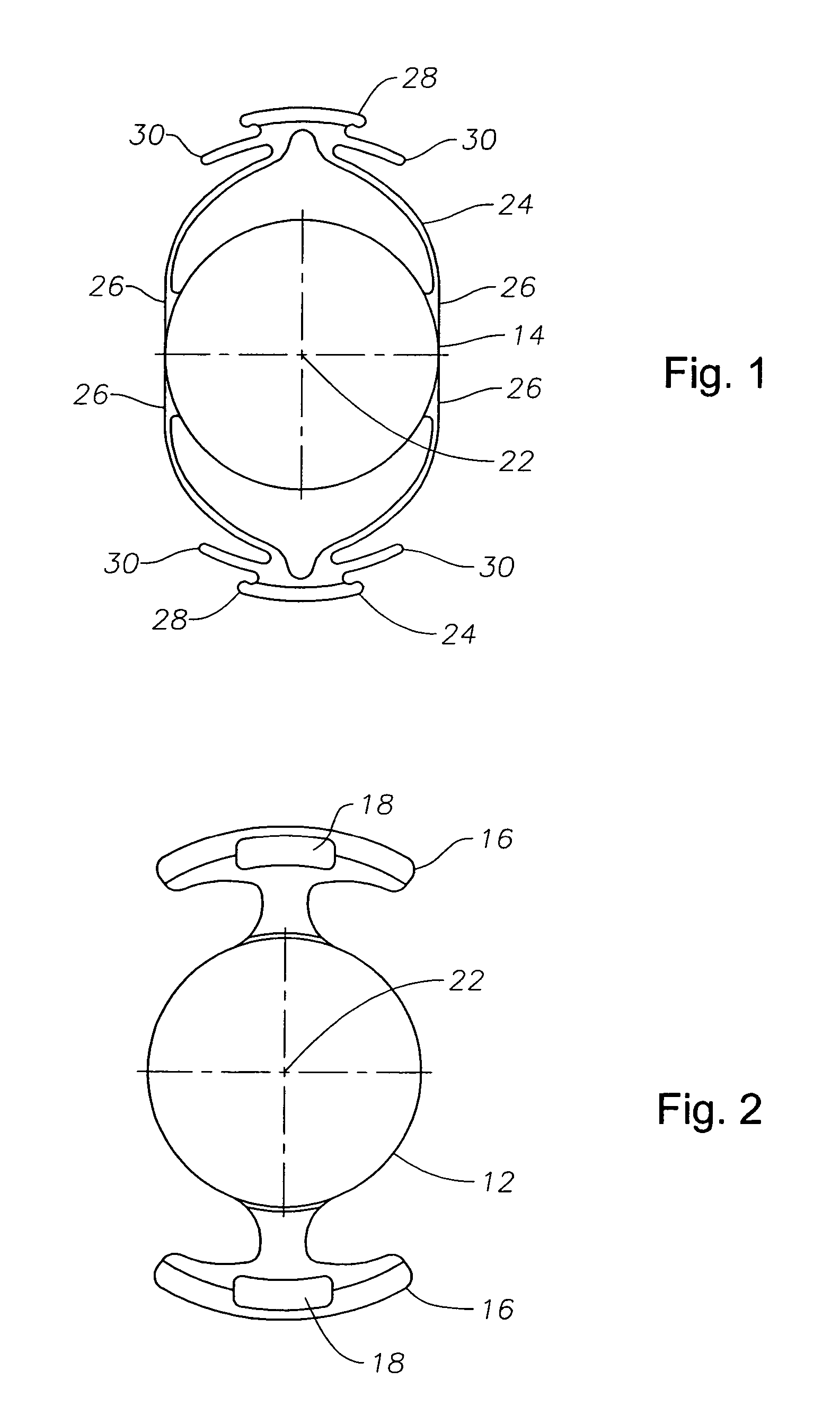Accommodative intraocular lens
- Summary
- Abstract
- Description
- Claims
- Application Information
AI Technical Summary
Benefits of technology
Problems solved by technology
Method used
Image
Examples
second embodiment
[0039]As best seen in FIG. 3, in a second embodiment, anterior optic 114 is of similar construction as optic 14, having haptics 124 that are connected to optic 114 by hinge regions 126 and containing notched tabs 128 carried at the distal ends of haptics 124. Tabs 128 are sized and shaped to fit within slots 18 on optic 12, thereby holding optic 114 firmly within optic 12 while still permitting rotation of locking tabs 128 within slots 18.
[0040]As best seen in FIG. 6, in a second embodiment, posterior optic 112 is of similar construction as optic 12, being generally symmetrical about optical axis 22 and containing opposing, generally T-shaped haptics 116 that are shaped to stretch and fill the equatorial region of the capsular bag. Hap tics 116 contain slots 118.
third embodiment
[0041]As best seen in FIG. 8, in the present invention, optic 212 is generally symmetrical about optical axis 22 and contains opposing, generally T-shaped haptics 216 that are shaped to stretch and fill the equatorial region of the capsular bag. Haptics 216 contain slots 218 that penetrate all the way through haptics 216. As best seen in FIG. 7, optic 214 contains a plurality of haptics 224 that are connected to optic 214 by hinge regions 226 and contain notched tabs 228 carried at the distal ends of haptics 224. Tabs 228 are sized and shaped to fit within slots 218 on optic 212, thereby holding optic 214 firmly within optic 212 while still permitting rotation of locking tabs 228 within slots 218. One skilled in the art will recognize that slots 218 may be located on haptics 224 and that tabs 228 may be located on optic 212.
[0042]As best seen in FIGS. 9, 10 and 11, optic 312 is generally symmetrical about optical axis 22 and contains opposing, generally T-shaped haptics 316 that are...
PUM
 Login to View More
Login to View More Abstract
Description
Claims
Application Information
 Login to View More
Login to View More - R&D
- Intellectual Property
- Life Sciences
- Materials
- Tech Scout
- Unparalleled Data Quality
- Higher Quality Content
- 60% Fewer Hallucinations
Browse by: Latest US Patents, China's latest patents, Technical Efficacy Thesaurus, Application Domain, Technology Topic, Popular Technical Reports.
© 2025 PatSnap. All rights reserved.Legal|Privacy policy|Modern Slavery Act Transparency Statement|Sitemap|About US| Contact US: help@patsnap.com



